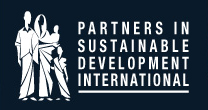FOOD INSECURITY IN BANGLADESH - 2ND IN A 3 PART SERIES
Everyone knows that food is an essential part of life and culture. In Bangladesh, it’s no different. Bangladeshi cuisine is influenced by many of its neighbors, pulling from both Bengal (a nearby region in India) and the middle east. Religion also has a large effect on their cuisine. Since much of Bangladesh is Muslim, many of their dishes are halal. There are many factors to making a dish halal including what kind of food it is, how the animal is killed, and how it is prepared. Geography also has a considerable impact on Bangladeshi food. As they are in a country made up of many rivers, fish are an extremely common, if not the most common, protein found in Bangladeshi dishes.
While there are a large variety of foods in Bangladesh, there are also foods that people will eat on a daily, or almost daily basis. This includes rice and fish, which are key ingredients in many different dishes. Another common ingredient is onions. Onions are also common in many snacks and street foods, such as piyaju (a spicy onion fritter). Many of the dishes consumed in Bangladesh have a regional flavor, and the cuisine in each part of Bangladesh is noticeably different. However, in addition to the ingredients mentioned above, curries tend to be used throughout many regions of Bangladesh. Curries vary widely depending on their location, but it typically refers to a dish made with specific spices like curry powder.
Around thirty percent of the Bangladesh population meets the criteria for food insecurity according to the Food and Agriculture Organization of the United Nations. Their definition for food security, from the 1996 World Food Summit, is, “ when all people, at all times, have physical and economic access to sufficient, safe and nutritious food that meets their dietary needs and food preferences for an active and healthy life.” Thirty percent translates to fifty million people in Bangladesh who do not have access to adequate food. In comparison, around ten percent of the US population is food insecure.
At PSDI, one of our main goals is to provide people who are suffering from extreme food insecurity with enough food for them to live a healthier life so that they can focus on meeting their other goals, such as securing better housing or participating in income generating activities. This aligns with the United Nations Sustainable Development Goal #2 of Zero Hunger. We do this in two ways. The first is giving a family what food they need directly. The second way is to help improve surrounding infrastructure in order to make food more accessible to those who need it through programs such as vegetable gardening and the planting of fruit tree saplings on the land around their home.
It doesn’t take much money to help provide food to those in need. Even a donation of only $25 will provide food for a family for an entire month. While Bangladesh has a great variety of foods and a rich food history, there is still much to do to ensure that everyone has the food they need to live an active and healthy life. Consider joining us in ensuring that the families we serve in Bangladesh have enough nourishing food for their family.
